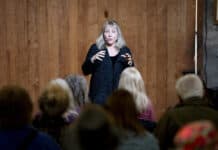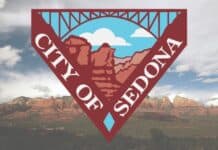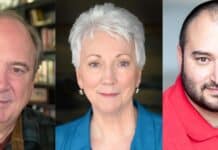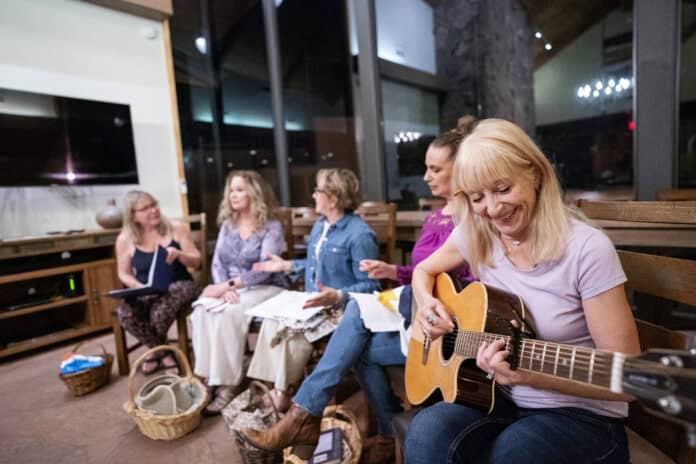
“The Dead Quilters Society,” a musical dramedy by Dev Ross and Shondra Jepperson, will debut at the Sedona Heritage Museum on Friday, Nov. 1, at 4 p.m., with subsequent performances on Saturday and Sunday, Nov. 2 and 3, at the same time. The Sunday performance is already sold out.
“I’m excited about having a living exhibit of Sedona history with the stories of these women and how they intertwine and the ripple effects of their lives on our community,” Executive Director Nate Meyers said. “It’s a fun and unique way to share that history.”
The musical is the sixth by Ross and Jepperson and is a celebration of the lives of five women who helped weave the cultural fabric of Sedona: Environmentalist and entertainer Katie Lee, played by Jepperson; Dora Chavez Madrid, a Verde Valley historian, daughter of ranchers and B-52 riveter during World War II, played by Ross; Navajo health activist and tribal leader Annie Wauneka, played by Samantha Noelle Sanchez; businesswoman and developer Fanny Gulick, played by Lisa Schatz Glinsky; and sculptor and developer of the Chapel of the Holy Cross Marguerite Brunswig Staude, played by Gail Edwards.
Songs include “War Do We Part?” which discusses how the outbreak of World War II prevented the construction of Staude’s concept of a modern church in Budapest before that dream was realized among the red rocks in 1956.
“Everything she’d been working on came to a dead halt because of war, and Shondra and I started talking about that and how war affects people today when looking at what’s happening in the world where it affects so many lives and stops them,” Ross said. “I knew that I wanted to make a statement about war and the losses that we go through … What else did it stop? It stopped husbands who had wives who had sons and brothers. I chose ‘War Do We Part’ because “’til death do we part.’”
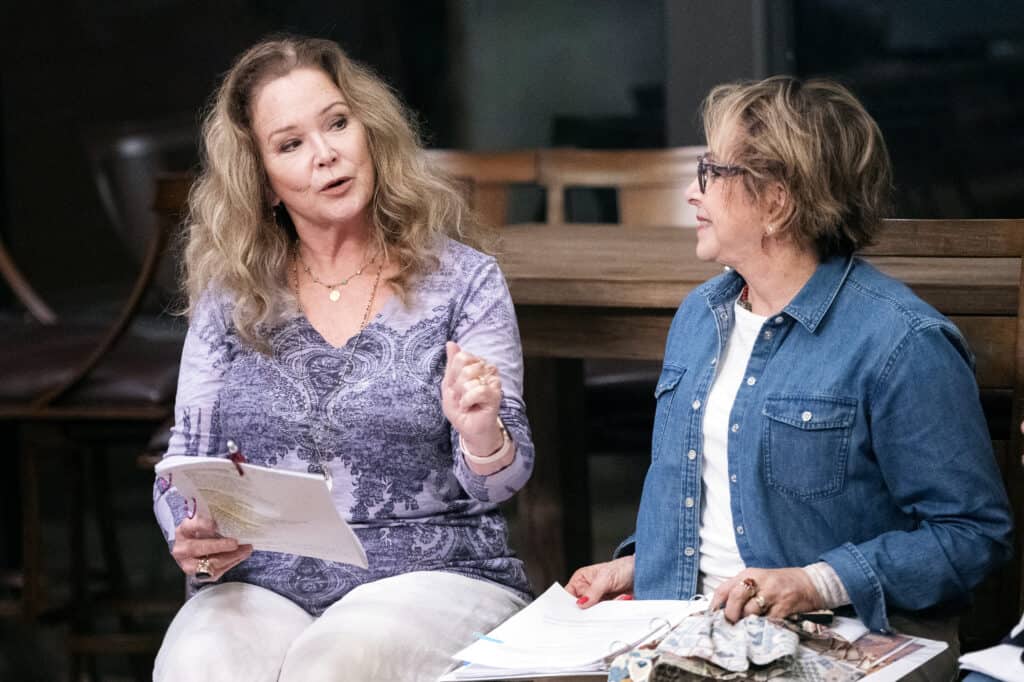
During the musical, the members of the Dead Quilters Society discuss the regrets they had in their private lives.
“I picked that because I thought, what a great thing to have five dead women come back and talk about. It leads to a lot of emotional moments and humor,” Ross said.
Staude “feels she has none, but she discovers that her regret is it took so long to find her voice, to be able to say, ‘I’m an artist, not a debutante,’” Edwards said of her character, who came from an aristocratic family. “I think it is self-agency motivated by knowing she was an artist … It was the core of who she was. She saw where she was going and refused.”
“Sometime in the early ’40s, Mrs. Gulick moved to Sedona and, figuratively speaking, began mining land,” the Red Rock News wrote on May 23, 1974. “In those days it was believed that development of the area would always be impossible because of the lack of any water away from the creek, but Fanny Gulick would have none of that. She found a fellow believer in well driller Carl Williams, who, in 1947, sank a deep well on her Grasshopper Flats property and came up with water within a few feet of where he predicted it would, thereby changing forever the face of Sedona’s destiny.”
Gulick ended up owning about 1,000 acres in Big Park and West Sedona. In spite of Gulick’s profession as a developer and Katie Lee’s opposition to the construction of Glen Canyon Dam, the two characters got along because of their shared outsider status.
“Fanny had a mouth that, as it was quoted, that it would even surprise the Nixon tapes with her swearing,” Schatz Glinsky said. “Her story is fabulous, but she didn’t have any qualms with Katie Lee. I’ve played other parts that [Ross] has written about historical women here in Sedona. But I’m constantly learning more about these unique women from Sedona’s history. Such as [Gulick] helped build the Hoover Dam.”
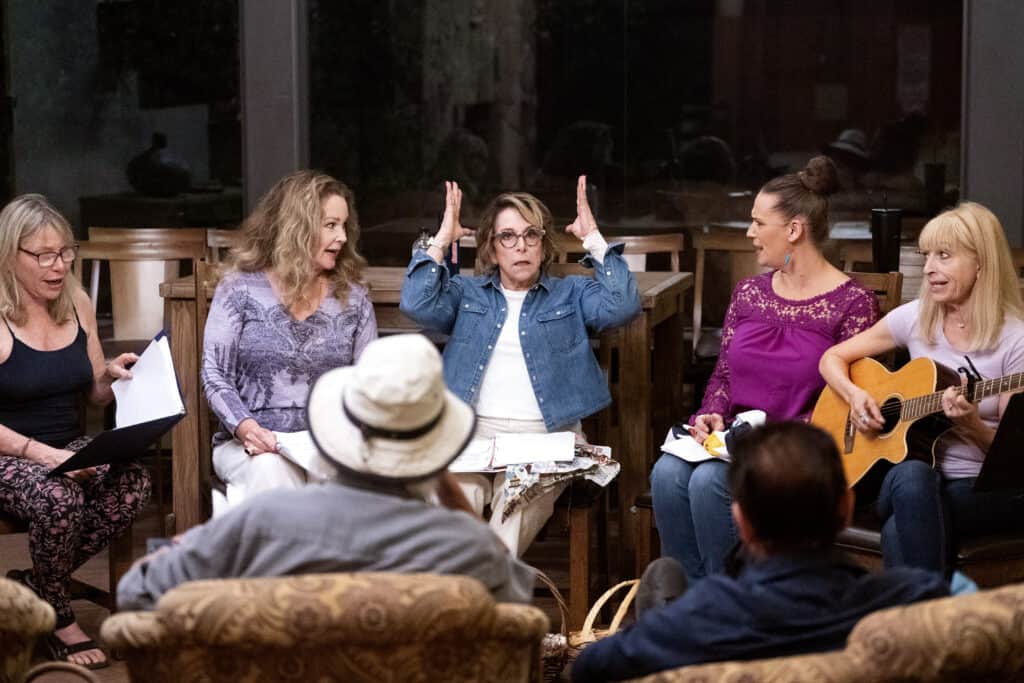
“Nobody had ever really seen anything like Fanny before in this area,” Meyers said. “And that personality comes through in the character in the show. Annie Wauneka and everything she did for the native peoples and healthcare for them. It’s an incredible story.”
Wauneka was born into the Navajo Tse níjikíní clan in 1910 and later survived the 1918-20 Spanish flu outbreak, during which she cared for some of the victims.
In 1951, Wauneka “was one of the first women ever elected to the [Navajo] Tribal Council and began to put her knowledge to use,” the National Park Service website states. “She created an English-Navajo medical dictionary to help doctors and patients communicate, educated people about tuberculosis, gave regular radio broadcasts in Navajo to share health and welfare information, served on advisory boards to the U.S. Surgeon General and the U.S. Public Health Service and improved housing and sanitation conditions in her community … [She] received the Presidential Medal of Freedom in 1963 for her life of service.”
“It’s a breath of fresh air,” Sanchez said of her portrayal of Wauneka. “Because oftentimes we hear stories that are predominantly male. I never knew this about the women behind the fabric of Sedona and how these women bridge together. We bond, and I feel it will bring the audience together to connect. We all have had regrets, but we all share in the beauty of what life is all about — our triumphs, our struggles, our tenacity.”
For more information, call the Sedona Heritage Museum at (928) 282- 7038. To purchase tickets, visit sedonamuseum.org. A wine and cheese reception will take place before each performance.




